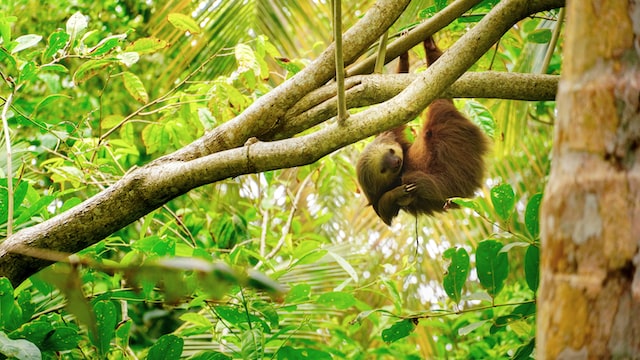
Costa Rica is known for its beautiful beaches and fun activities and adventures such as zip-lining, snorkeling, and boating. But this Central American destination is also known for its wildlife which is sure to win the hearts of animal-loving kids. In Costa Rica, every child will enjoy themselves and remember that trip for as long as they live. Read below to find out how to plan a school trip to Costa Rica for them that they will talk about for months.
Costa Rica Science Tour
Costa Rica conveys an idea of serene calmness as a haven for yoga enthusiasts, much like its foggy tree tops, but beyond the canopy, there is also a wild side full of wildlife, birds, and adventure waiting to be explored. Just by walking in nature, you will see many interesting things, and you can expand your horizons if you decide to go around by car. Be sure to keep in mind that driving while in Costa Rica may differ from driving in other countries, so be sure to ask more about it. Ecotourism has long been at the forefront in Costa Rica. Given the need to preserve biodiversity, it has been crucial to protect the area's natural charms while also giving the local population employment options.
Students can experience a variety of sceneries on this tour, including San Jose, the nation's capital, as well as hot springs, waterfalls, jungles, beaches, and volcanoes. Costa Rica offers great chances to learn about a variety of scientific subjects, such as energy, ecosystems, and more.
Costa Rica Geography Tour
Costa Rica, a nation the size of Denmark, is home to 5% of the world's biodiversity. Throughout the region, you can find sloths, monkeys, frogs, butterflies, turtles, birds, bats, and more in the mountainous rainforests, sandy beaches, and rainy lowlands.
This route for a school trip will show pupils not only the wildlife but also the tropical rainforests, waterfalls, peaceful beaches, and rising volcanoes that are all located inside the borders of this little, verdant nation. The extraordinary physical geography that they are surrounded by, including volcanoes, hot springs, geothermal plains, and more, will also astound geographers.
The inhabitants of Costa Rica are passionate about preserving their natural habitats and surroundings. As the premier sustainable tourism destination, Costa Rica strives to become the first nation to be carbon neutral. Students of geography will discover instances of sustainable energy sources all around the nation.
Costa Rica Adventure Tour
You will be unlikely to find a place more ideal for the adventurous trip of a lifetime than Costa Rica, which offers everything from horseback riding, hiking, and tubing to zip-lining through a rainforest.
Along with the abundance of activities available to students, the unforgettable backdrop provided by the magnificent vistas they will experience will make for an amazing adventure. Beautiful beaches, vast jungles, towering volcanoes, waterfalls, villages, hot springs, caverns, and much more will be visible to students.

Costa Rica Resilience Tour
The phrase "pura vida" (pronounced "poo-rah vee-dah"), which translates to "pure life," is a style of living in Costa Rica. This phrase is used by Costa Ricans to greet one another, say farewell, and express that everything is fantastic, but it also describes how they approach life. To them, living a life of gratitude and avoiding complaining is known as pura vida.
Costa Rica is the dream location for a resilience trip because of its upbeat outlook, colorful culture, a wealth of fun activities, and availability of chances to improve kids' self-esteem, confidence, cooperation, and perseverance.
Students will have the opportunity to engage in conservation projects that will change their lives in the Pacuare Leatherback Turtle Reserve. Playa Grande has been a major nesting site for the giant leatherback sea turtle and is also a haven for Green sea turtles from prehistory. Green turtles lay their eggs all year long, while the leatherback nesting season lasts from October to February.
The Pacuare Leatherback Turtle Reserve offers a variety of opportunities for pupils to get engaged in preservation based on the season they visit.
Students can participate in the turtle census from March through July and observe the nesting cycle. You will assist in the emergence of thousands of young Leatherback turtles between June and September.
Hundreds of different wildlife species can be seen in the waterways and along the riverbanks of the Pacuare Reserve at any time of year.
Learning, residing, and having fun in a tropical paradise teaches children a unique view of course contents and a well-deserved vacation all in one, so they will return from a school trip to Costa Rica with a greater love for their subject matter! Many kids discover that these excursions ignite a lifelong passion for geographic and scientific study.











